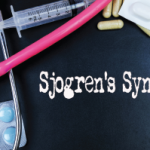Vasculitic neuropathies are invariably painful and always require immunosuppressant therapy, Dr. Birnbaum said. Axonal neuropathies may not always be painful and may only have subclinical symptoms or mild weakness. Although symptomatic therapy is indicated in both axonal and vasculitic neuropathies, immunosuppressive therapy is always warranted for vasculitic neuropathies, and symptomatic treatment may be sufficient for axonal neuropathies, he said.
Lymphoma Risk
Lymphoma is only seen in 5–10% of primary Sjögren’s syndrome patients, said Elka Theander, PhD, associate professor of internal medicine at Lund University and Skane University Hospital in Malmö, Sweden. About a third of those malignancies are non-Hodgkin’s lymphomas, and may occur at a median of 11 years after the Sjögren’s diagnosis, she said.
“What you could tell your patient is that there is a risk of lymphoma, but it won’t be just now. It’s usually a later event,” said Dr. Theander. “Your patient may follow with, ‘Are there some obvious signs that I should look for?’” They should watch for swollen lymph nodes, heavy night sweats, temperatures that come and go without obvious causes, losing more than 10% of body weight, or new, persistent salivary gland swelling or change in shape, she said.
‘Always suspect … a neurological disorder in Sjögren’s syndrome … is due to a competing comorbidity.’
Don’t wait until Sjögren’s patients present with these symptoms, Dr. Theander said. “In rheumatology, I think we need to find predicting signs, like biomarkers, to [identify] patients in an early, prelymphoma situation. It’s very important to look into the future and understand which of our patients, in five or 10 years, are among those who may be lymphoma patients, and then tailor an approach,” Dr. Theander said. Strong signs of lymphoma risk include persistent parotid gland swelling, low C4 palpable purpura, cryoglobulinemia and hypocomplementemia, she said.
About 60–80% of lymphomas in Sjögren’s syndrome are mucosal-associated lymphoid tissue malignancies or MALTs, as opposed to diffuse large B-cell lymphomas or DLBCLs, Dr. Theander said. MALTs may be seen significantly earlier after diagnosis and in younger patients, she said. “More than 70% of patients with MALTs have hypergammaglobulinemia at their primary Sjogren’s syndrome diagnosis,” she said. Extraglandular manifestations are more often seen in DLBCL patients.
Germinal center-like structures are a risk factor for lymphoma in Sjögren’s syndrome, Dr. Theander said. These are an important place for B-cell maturation. Patients may present with terrible vasculitis. Increasing focal scores of three or greater are a good predictor of germinal center-like structures and lymphoma, she said.

